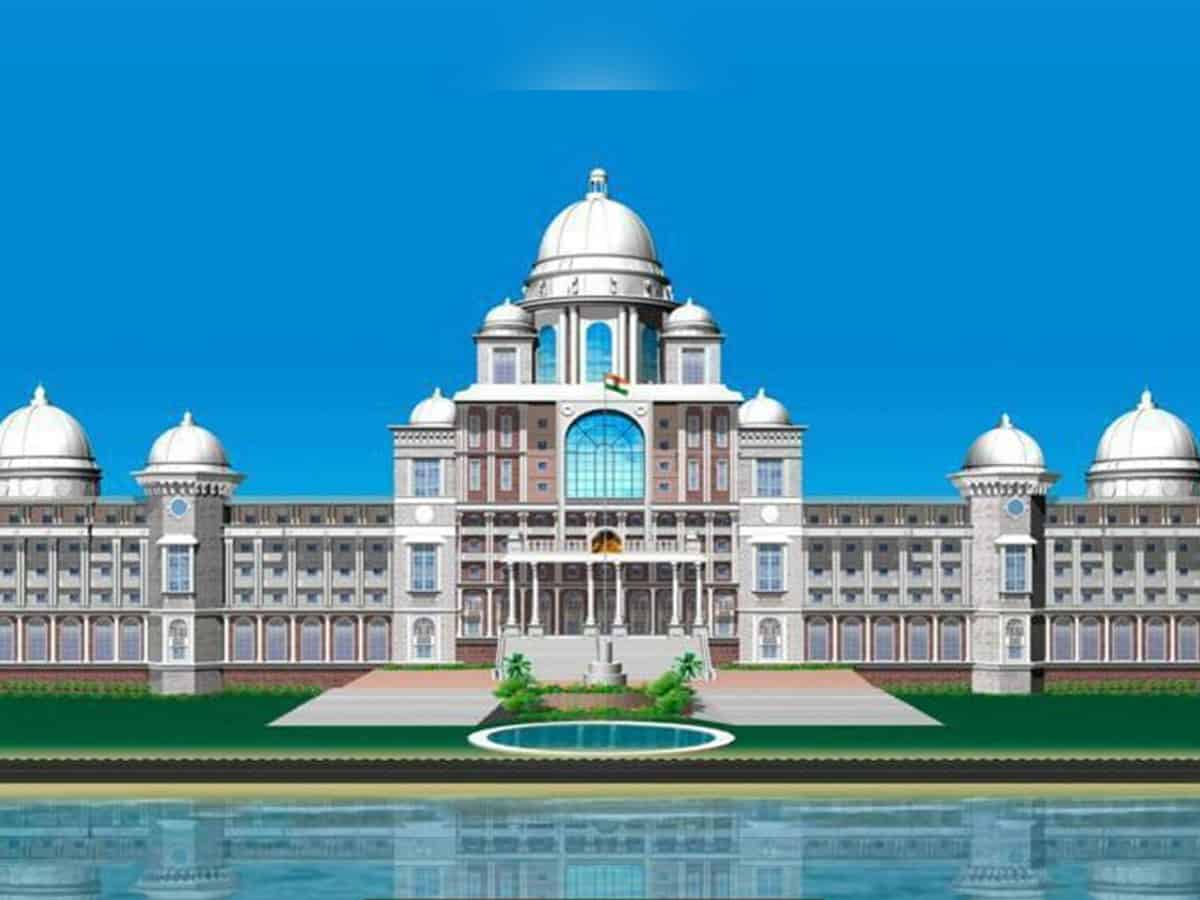
Hyderabad: The new building of Telangana Secretariat, which is all set to be inaugurated on April 30, is a fine blend of modernity with state-of-the-art features and architectural grandeur.
The structure has been built in the Indo-Saracenic style that blends the Indo-Islamic architectural features generally with domes. The multiple domes and arches of the building perfectly fit in this style representing the syncretic and liberal Deccani style, expressing Telangana’s quintessence.
Designed by the Chennai-based Architects Ponni Concessao and Oscar Concessao, the complex has been built with all the Indian Green Building Council norms, meeting the stipulations of fire safety, disaster management and other mandatory regulations.
The sprawling complex, the nerve centre of the state’s administration, has come near Hussain Sagar lake in the heart of the city at the same site where the old secretariat of Telangana and earlier united Andhra Pradesh once stood.
The new Secretariat complex, which houses the offices of the chief minister, ministers, chief secretary and all other secretaries and heads of departments, is a seven-storey structure equipped with all modern facilities. It has been constructed at a cost of nearly Rs 650 crore.
The building, termed as a symbol of Telangana’s progress, boasts off two massive domes. National emblem atop one of the domes has taken the building to its planned height of 265 feet.
The Secretariat, which has been named after chief architect of the Indian Constitution Dr B. R. Ambedkar, will be inaugurated at 6.08 a.m. on April 30 with the beginning of various religious rituals.
Chief Minister K. Chandrasekhar Rao will assume his chair inside his chambers at 1.20 p.m. the same day
The BRS government says the Secretariat building would reflect the pride of Telangana and would stand as a role model for other states.
The overall master plan has been zoned for the Secretariat building, ancillary buildings for visitors, police personnel, fire department, creche, utility building, temple, mosque and church.
Ample space has been planned for landscaping – hardscape with stone pavements, and softscapes consisting of lawns, native trees, fountains, parking for VVIPs, staff and others. It has been constructed with all modern amenities including conference halls, visitors’ lounges, dining halls and others.
The total built-up area of the 265 feet high main complex is 8,58,530 square feet. The area of ancillary building is 67,982 square feet.
The building has lower ground plus ground plus six floors. Each floor has a height of 14 feet.
The central tower in the east wing has two floors of double height while the central tower in the west wing has two floors of single height and one floor of double height.
The length and breadth of the complex is 600 x 300 feet.
Out of a total land area of 27.9 acres, the building has come up on 2.45 acres. Landscaping has been taken up on 7.72 acres. The central courtyard lawn is spread over 2.2 acres.
Parking provision has been made for 560 cars and 700 two wheelers inside the premises.
According to officials, 7,000 tonnes of steel, 35,000 tonnes of cement, 26,000 tonnes of sand, 60,000 cubic metres of concrete and 11 lakh bricks have been used for construction. Three lakh square feet of granite and one lakh square feet of marble have also been used.
As many as 12,000 people used in three shifts to complete the construction.
The chief minister had laid the foundation stone for the new Secretariat complex on June 27, 2019. However, the work commenced towards the end of 2020 as demolition of old buildings after the High Court dismissed petitions filed by the opposition parties and heritage activists.
The petitioners termed the government’s plan for building a new secretariat as a waste of public money. They argued that the existing structures were in good condition and could meet all the requirements.
The government, however, submitted to the court that the buildings were constructed without safety norms and that the state needs an integrated complex with modern amenities to ensure smooth functioning of offices of the chief minister, ministers, secretaries and others.
Construction works gathered pace after the relaxation of restrictions imposed on account of Covid.
